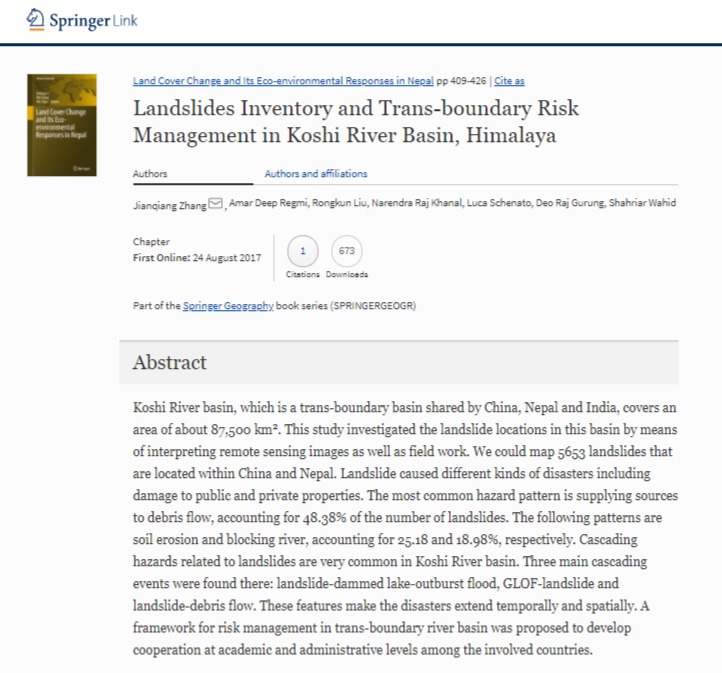
Koshi River basin, which is a trans-boundary basin shared by China, Nepal and India, covers an area of about 87,500 km2. This study investigated the landslide locations in this basin by means of interpreting remote sensing images as well as field work. We could map 5653 landslides that are located within China and Nepal. Landslide caused different kinds of disasters including damage to public and private properties. The most common hazard pattern is supplying sources to debris flow, accounting for 48.38% of the number of landslides. The following patterns are soil erosion and blocking river, accounting for 25.18 and 18.98%, respectively. Cascading hazards related to landslides are very common in Koshi River basin. Three main cascading events were found there: landslide-dammed lake-outburst flood, GLOF-landslide and landslide-debris flow. These features make the disasters extend temporally and spatially. A framework for risk management in trans-boundary river basin was proposed to develop cooperation at academic and administrative levels among the involved countries.